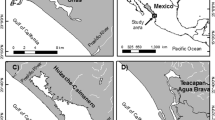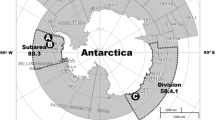Abstract
We report concentrations of methylmercury (MeHg) and total mercury (THg) in marine, freshwater and aquaculture species from a major fisheries landing center in the east coast of India, Nellore. Concentrations of MeHg were in the range 1.67–105.25 ng/g ww (wet weight). Aquaculture species had lower mercury concentrations than naturally caught marine or freshwater species (p < 0.05). While none of the 242 analyzed samples had MeHg greater than the limits stipulated by food and safety authority in India (250 ng/g) or other countries, dietary exposure analysis for a subsistence fish consuming Indian population for which fish consumption patterns were known revealed that there was a 14.3% probability of exceedance of the US EPA reference dose of 0.1 µg/kg BW/day. The US EPA one-box pharmacokinetic model slightly better predicts the observed hair mercury concentrations in this population when the MeHg absorption efficiency in the human gastrointestinal tract is 1–72% (with a median of 14%) as suggested recently rather than the 91–97% used more commonly.

Similar content being viewed by others
References
Barik NK (2017) Freshwater fish for nutrition security in India: evidence from FAO data. Aquac Rep 7:1–6. https://doi.org/10.1016/j.aqrep.2017.04.001
Burger Chakraborty L, Qureshi A, Vadenbo C, Hellweg S (2013) Anthropogenic mercury flows in India and impacts of emission controls. Environ Sci Technol 47:8105–8113
Calderón J, Gonçalves S, Cordeiro F, de la Calle B (2013) Determination of methylmercury in seafood by direct mercury analysis: standard operating procedure. European Commission Joint Research Center, Report JRC 2013; 80259: 1–12
Depew DC, Basu N, Burgess NM, Campbell LM, Devlin EW, Drevnick PE, Hammerschmidt CR, Murphy CA, Sandheinrich MB, Wiener JG (2012a) Toxicity of dietary methylmercury to fish: derivation of ecologically meaningful threshold concentrations. Environ Toxicol Chem 31:1536–1547
Depew DC, Basu N, Burgess NM, Campbell LM, Evers DC, Grasman KA, Scheuhammer AM (2012b) Derivation of screening benchmarks for dietary methylmercury exposure for the common loon (Gavia immer): rationale for use in ecological risk assessment. Environ Toxicol Chem 31:2399–2407
Dijkstra JA, Buckman KL, Ward D, Evans DW, Dionne M, Chen CY (2013) Experimental and natural warming elevates mercury concentrations in estuarine fish. PLoS ONE 8:e58401. https://doi.org/10.1371/journal.pone.0058401
Evers DC, Taylor M, Burton M, Johnson S (2018) Mercury in the Global Environment: understanding spatial patterns for biomonitoring needs of the Minamata Convention on Mercury. Biodiversity Research Institute. Portland, Maine. BRI Science Communications Series 2018-21
Evers DC, Sunderland E (2019) Technical information report on mercury monitoring in biota: proposed components towards a strategic long-term plan for monitoring mercury in fish and wildlife globally. UN Environment Programme, Chemicals and Health Branch, Geneva
FAO (2016) The state of world fisheries and aquaculture (ISBN 978-92-5-109185-2). Contributing to Food Security and nutrition For All, Rome
FDA (2011) Fish and fishery products hazards and controls guidance fourth edition—April 2011. U.S. Department of Health and Human Services Food and Drug Administration Center for Food Safety and Applied Nutrition
FSI (2014) Handbook on fisheris and statistics 2014. Fisheries Statistics Unit (FSI), Department of Animal Husbandary, Dairying and FIsheries, Ministry of Agriculture Government of India, New Delhi
FSSAI (2017) Food Safety and Standards (Contaminants, toxins and Residues) Regulations, 2011 [No. Version-II (18 .0 8 .2017)]. FSSAI (Food Safety and Standards Authority of India)
Grandjean P, Budtz-Jørgensen E (2007) Total imprecision of exposure biomarkers: implications for calculating exposure limits. Am J Ind Med 50:712–719. https://doi.org/10.1002/ajim.20474
Kannan R, Ramanamurthy MV (2016) Shoreline Change Monitoring in Nellore Coast at East Coast Andhra Pradesh District Using Remote Sensing and GIS. J Fish Livest Prod. https://doi.org/10.4172/2332-2608.1000161
Karimi R, Fitzgerald TP, Fisher NS (2012) A quantitative synthesis of mercury in commercial seafood and implications for exposure in the United States. Environ Health Perspect 120:1512–1519
Li M, von Stackelberg K, Rheinberger CM, Hammitt JK, Krabbenhoft DP, Yin R, Sunderland EM (2016) Insights from mercury stable isotopes into factors affecting the internal body burden of methylmercury in frequent fish consumers. Elem Sci Anthr 4:103
Looi LJ, Aris AZ, Haris H, Yusoff FM, Hashim Z (2016) The levels of mercury, methylmercury and selenium and the selenium health benefit value in grey-eel catfish (Plotosus canius) and giant mudskipper (Periophthalmodon schlosseri) from the Strait of Malacca. Chemosphere 152:265–273
Madhavi D, Kusuma DL (2015) Fish consumption pattern and its association with household characteristics in select coastal and non-coastal districts of Andhra Pradesh. Int J Sci Res 61:79–84
Maggi C, Berducci MT, Bianchi J, Giani M, Campanella L (2009) Methylmercury determination in marine sediment and organisms by Direct Mercury Analyser. Anal Chim Acta 641:32–36. https://doi.org/10.1016/j.aca.2009.03.033
MPEDA (2016) Annual Report 2015–2016. The Marine Products Export Development Authority Ministry of Commerce and Industry, Government of India, Kochi
MPEDA (2018). The Marine Products Exports Development Authority (MPEDA) [WWW Document]. https://mpeda.gov.in/MPEDA/marine_products_exports.php. Accessed 10 Nov 18
NCAEPR (2004). Strategies and options for increasing and sustaining fisheries and aquaculture production to benefit poor households in India. National Centre for Agricultural Economics and Policy Research, Delhi
Ouédraogo O, Amyot M (2011) Effects of various cooking methods and food components on bioaccessibility of mercury from fish. Environ Res 111:1064–1069. https://doi.org/10.1016/j.envres.2011.09.018
Parveen N, Singh SK (2016) Development of enhanced DO model for Gomti River at Lucknow stretch. India Int J Environ Sci 7(2):147
Passos CJ, Mergler D, Fillion M, Lemire M, Mertens F, Guimarães JR, Philibert A (2007) Epidemiologic confirmation that fruit consumption influences mercury exposure in riparian communities in the Brazilian Amazon. Environ Res 105:183–193. https://doi.org/10.1016/j.envres.2007.01.012
Schartup AT, Qureshi A, Dassuncao C, Thackray CP, Harding G, Sunderland EM (2018) A Model for methylmercury uptake and trophic transfer by marine plankton. Environ Sci Technol 52:654–662. https://doi.org/10.1021/acs.est.7b03821
Scheuhammer A, Braune B, Chan HM, Frouin H, Krey A, Letcher R, Loseto L, Noël M, Ostertag S, Ross P, Wayland M (2015) Recent progress on our understanding of the biological effects of mercury in fish and wildlife in the Canadian Arctic. Sci Total Environ 509:91–103
Schmidt L, Bizzi CA, Duarte FA, Dressler VL, Flores EM (2013) Evaluation of drying conditions of fish tissues for inorganic mercury and methylmercury speciation analysis. Microchem J 108:53–59. https://doi.org/10.1016/j.microc.2012.12.010
Selin NE (2009) Global biogeochemical cycling of mercury: a review. Annu Rev Environ Resour 34:43–63
Shao J, Shi J, Duo B, Liu C, Gao Y, Fu J, Yang R, Jiang G (2016) Mercury in alpine fish from four rivers in the Tibetan Plateau. J Environ Sci 39:22–28
Sinha RK, Sinha SK, Kedia DK, Kumari A, Rani N, Sharma G, Prasad K (2007) A holistic study on mercury pollution in the Ganga River system at Varanasi, India. Curr Sci 92:1223–1228
Sirot V, Guérin T, Mauras Y, Garraud H, Volatier JL, Leblanc JC (2008) Methylmercury exposure assessment using dietary and biomarker data among frequent seafood consumers in France: CALIPSO study. Environ Res 107:30–38. https://doi.org/10.1016/j.envres.2007.12.005
Stern AH (1997) Estimation of the interindividual variability in the one-compartment pharmacokinetic model for methylmercury: implications for the derivation of a reference dose. Regul Toxicol Pharmacol 25:277–288. https://doi.org/10.1006/rtph.1997.1105
Storelli MM, Storelli A, Giacominelli-Stuffler R, Marcotrigiano GO (2005) Mercury speciation in the muscle of two commercially important fish, hake (Merluccius merluccius) and striped mullet (Mullus barbatus) from the Mediterranean sea: estimated weekly intake. Food Chem 89(2):295–300. https://doi.org/10.1016/j.foodchem.2004.02.036
Subhavana KL, Qureshi A, Roy A (2019) Mercury levels in human hair in South India: baseline, artisanal goldsmiths and coal-fired power plants. J Expo Sci Environ Epidemiol 2019:1
UN (2013) Minamata Convention on Mercury. (Treaty No. CTC-XXVII-17)
US EPA (2011) Exposure Factors Handbook: 2011 Edition, National Center for Environmental Asses sment, Washington, DC; EPA/600/R-09/052F. Available from the National Technical Information Service, Springfield, VA, and online at https://www.epa.gov/ncea/efh
Wiener JG, Krabbenhoft DP, Heinz GH, Scheuhammer AM (2003) Ecotoxicology of mercury. Handb Ecotoxicol 2:409–463
Yaginuma-Sakurai K, Murata K, Iwai-Shimada M, Nakai K, Kurokawa N, Tatsuta N, Satoh H (2012) Hair-to-blood ratio and biological half-life of mercury: experimental study of methylmercury exposure through fish consumption in humans. J Toxicol Sci 37:123–130. https://doi.org/10.2131/jts.37.123
Zhang Y, Nakai S, Masunaga S (2009) An exposure assessment of methyl mercury via fish consumption for the Japanese population. Risk Anal 29:1281–1291
Zhang W, Zhang X, Tian Y, Zhu Y, Tong Y, Li Y, Wang X (2018) Risk assessment of total mercury and methylmercury in aquatic products from offshore farms in China. J Hazard Mater 354:198–205
Acknowledgements
This work was supported by the DST-Inspire grant (IFA-13 EAS-10) to AQ, MHRD fellowship to KLS, and the Center of Excellence in Sustainable Development (IIT Hyderabad) fellowship to RTK. Any opinions, findings, and conclusion or recommendations expressed in this manuscript are those of the authors and do not necessarily reflect the view of the institute or the funding agencies.
Author information
Authors and Affiliations
Corresponding author
Additional information
Publisher's Note
Springer Nature remains neutral with regard to jurisdictional claims in published maps and institutional affiliations.
Electronic supplementary material
Below is the link to the electronic supplementary material.
Rights and permissions
About this article
Cite this article
Subhavana, K.L., Keerthana, R.T. & Qureshi, A. Mercury in Marine, Freshwater and Aquaculture Species from South India and Human Exposure Risk Assessment. Expo Health 12, 897–903 (2020). https://doi.org/10.1007/s12403-020-00352-x
Received:
Revised:
Accepted:
Published:
Issue Date:
DOI: https://doi.org/10.1007/s12403-020-00352-x




